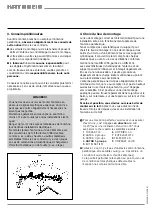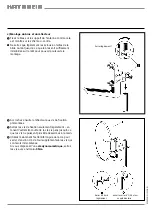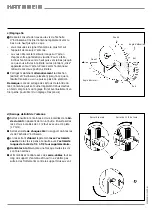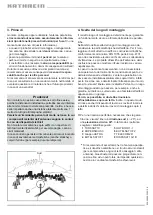
935.2098/C/1205/3.8e
Attention!
The installation work can create problems for your
health and life.
Therefore:
The mounting procedure described here demands
skills and a knowledge how the antenna behaves
when being subjected to atmospheric conditions. If
you do not have the required skills, ask a specialist
to do the installation work.
When working on the roof or near to drop away
sites, use a safety belt.
Make sure that the roof will support your weight.
Wear non-slip shoes.
Use ladders or other climbing aids that are in
perfect condition.
If passers-by can be hurt by falling objects, block
the danger area.
Watch out for overhead power lines. Getting into
contact with these means danger to life!
Never work on antenna installations during a
thunderstorm or when one is approaching.
This can put your life at risk!
5. Installation of the antenna
Make sure that the mast is in a vertical position, otherwi-
se the alignment of the antenna to the satellite can crea-
te problems.
a) Requirements for the antenna support
Only use masts or supports specially suited to be
used as antenna support. Other supports often do not
have the necessary strength required for the environ-
mental conditions.
Choose a mast that has a diameter of 48-90 mm and
a wall thickness of a least 2 mm. For mounting on the
wall, Kathrein recommands the wall supports ZAS 62,
ZAS 63.
When mounting takes place on the roof, see to it that
at least one sixth of the total length of the mast is
clamped (in the example below, one sixth equals
0.6 m).
b) Several antennas mounted on a mast:
We recommend to install the antenna on the lower
part of the mast in order to keep the bending moment
on the fixing point as low as possible.
Take care that you do not exceed the max. load rating
for the mast or support given in the technical data.
If you use for your antenna system conventional
household antennas and components bought from a
specialist dealer (antenna mast with a steel quality
ST 52, a diam. of 60 mm and a wall thickness in the
fastening area of 2.5 mm – e. g. ZSH 59 from
Kathrein) and effect the installation as shown in the
example on the left, you can be sure that the max.
load is sufficiently respected.
Attention!
In case your antenna array wil be
different, you must calculate the windload and
bending moment acc. to DIN EN 50083-1 (or you ask
a specialist to do it for you).
min. 0,6 mm











































